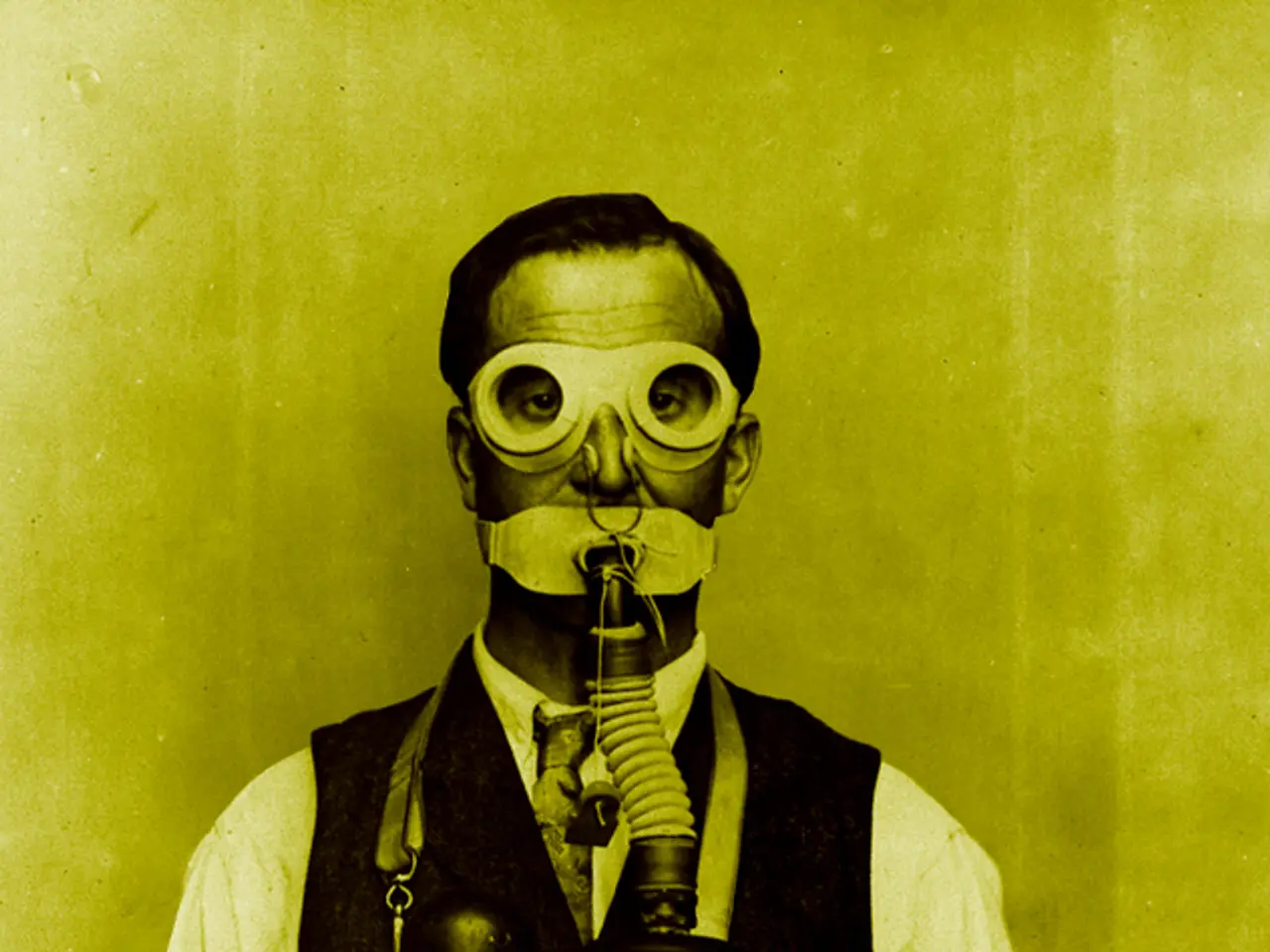Visual Guide on Skin Irregularities: Images, Remedies, and Root Causes
In the world of skin health, various lesions can manifest, each with unique symptoms, causes, and treatments. Here's a comprehensive guide to some common types of skin lesions and when to consult a doctor.
## Common Skin Lesions
### 1. Fungal Infections
Symptoms: Itching, scaling, redness, and a ring-shaped rash.
Causes: Dermatophytes, which cause conditions like athlete's foot, ringworm, and jock itch, spread through direct contact or contaminated items.
Treatment: Antifungal creams or oral medications and keeping the affected area clean and dry.
When to Consult a Doctor: If symptoms worsen or do not improve with home care.
### 2. Seborrheic Dermatitis
Symptoms: Itchy, scaly skin patches, often found in oily areas like the scalp and face.
Causes: Associated with excessive yeast (*Malassezia*) growth.
Treatment: Anti-dandruff shampoos and topical corticosteroids.
When to Consult a Doctor: If symptoms persist or worsen despite treatment.
### 3. Psoriasis
Symptoms: Thick, red, scaly patches called plaques.
Causes: Triggers include streptococcal infections, stress, and certain medications.
Treatment: Topical corticosteroids, vitamin D analogues, and systemic treatments for severe cases.
When to Consult a Doctor: If new plaques appear or current plaques worsen.
### 4. Eczema (Atopic Dermatitis)
Symptoms: Dry, itchy skin, redness, and patches often behind knees and elbows.
Causes: Allergens, stress, and genetics.
Treatment: Moisturizers, topical corticosteroids, and oral antihistamines.
When to Consult a Doctor: If symptoms persist, worsen, or if you suspect an allergic reaction.
### 5. Allergic-Related Skin Lesions
Symptoms: Red, itchy, inflamed skin with small bumps or blisters.
Causes: Allergens like food or medication.
Treatment: Avoid allergen exposure, use topical corticosteroids and antihistamines.
When to Consult a Doctor: If symptoms do not improve with home care or if they worsen.
## When to Consult a Doctor
- If a rash is severe, spreading, or worsening. - If it's accompanied by fever, pain, or difficulty breathing. - If home treatments do not improve symptoms. - For persistent or recurring rashes.
Consulting a healthcare provider is crucial for accurate diagnosis and appropriate treatment, especially if symptoms are severe or if you're unsure about the cause.
Impetigo, a contagious skin infection, requires prompt medical attention. Anyone who notices new moles or changes in existing moles should also contact a doctor. Acne, eczema, and psoriasis that do not resolve with over-the-counter products should be addressed by a healthcare provider as well.
In many cases, doctors can treat lesions that may become cancerous. People with actinic keratosis, crusty bumps that develop on skin damaged by the sun, have a high risk of developing skin cancer and should seek medical attention.
Cold sores, caused by the herpes simplex virus, appear as blisters on or around the lips and can be triggered by stress or exposure to sunlight. They tend to reappear from time to time. Anyone with concerns about skin cancer or cold sores should contact a healthcare provider.
Ringworm, a skin infection caused by fungus, can form a circular rash. It requires treatment, especially when it appears on the scalp. Eczema, a chronic condition that appears as itchy, red patches of skin and is not contagious, does not require special attention unless symptoms persist or worsen. Hives, caused by allergic reactions, can cause a red, bumpy, itchy rash.
In summary, understanding common skin lesions and their characteristics can help individuals identify and manage these conditions effectively. However, it's essential to consult a doctor for accurate diagnosis and appropriate treatment, especially when symptoms are severe or persistent.
- Under certain circumstances, fungal infections can be more than just a nuisance, with symptoms progressing to include inflammation and blisters.
- In the realm of nondigestive ulcers, those caused by atopic dermatitis usually manifest as dry, itchy skin around vulnerable areas like the knees and elbows.
- COPD, while primarily a lung disease, may lead to changes in the skin, such as a markedly dry appearance.
- Skin lesions can also be a symptom of more systemic diseases like diabetes, displaying as wounds that are slow to heal or discolored moles.
- Obesity, in addition to its known health implications, can cause skin irritations like rashes and fungal infections in areas where skin folds excessively.
- Hives, an inflammatory reaction on the skin, can be triggered by various allergens, causing welts or welts and itching.
- Crohn's disease, an inflammatory bowel disease, may cause skin manifestations like red bumps, rashes, or the inflammatory condition erythema nodosum.
- Eczema, atopic dermatitis, can also manifest in the form of dry, scaly skin, which might be mistaken for dandruff in less affected areas.
- Keratosis, a condition characterized by thickened and sticky skin, can present in various forms, such as actinic or seborrheic keratosis.
- In people with Type 2 diabetes, chronic skin conditions like bacterial or fungal infections can be more prevalent and recalcitrant.
- Skin lesions due to degeneration, such as wrinkles and fine lines, can be slowed by the implementation of proper skincare using AQ and HST products.
- Switchers, those who frequently switch skincare products, may find themselves battling dryness, inflammation, or irritation.
- Moles that undergo changes in color, size, or shape should be investigated, as they may be indicative of skin cancer or other medical conditions.
- A fungal infection of the skin can lead to a widespread rash with numerous red or brown patches, ultimately requiring medical intervention to prevent spread.
- Oral herpes, caused by the herpes simplex virus, can manifest not just on the mouth, but also on other areas of the skin, causing painful sores or blisters.
- Depression, a common mental health condition, may cause changes in the skin, such as dryness, dullness, or acne breakouts.
- Seekers of effective dermatitis treatment are encouraged to experiment with various medications like corticosteroids and antihistamines to control itchiness and inflammation.
- In the context of health-and-wellness, skin-care products should be chosen based on their ability to treat and prevent various skin care such as dryness, hives, and psoriasis.
- Predictive science and medical research play a crucial role in understanding the causes of skin lesions, improving treatment options, and preventing future outbreaks.




